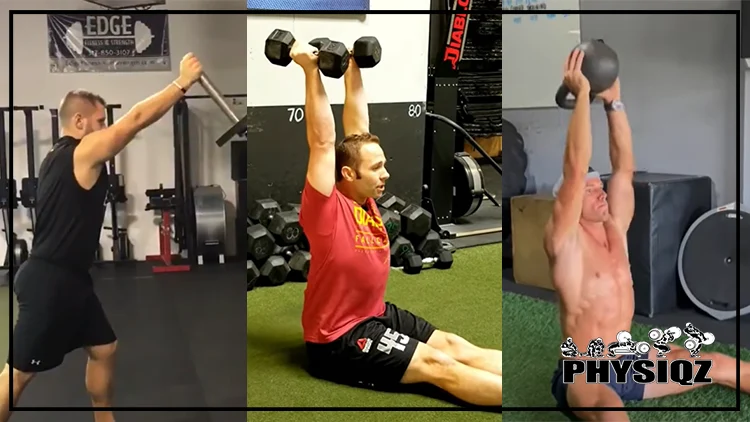
Vertical push exercises are essential for lifters to include in their training routines, as they contribute to overall upper body strength and help achieve the coveted v-taper and broad shoulders.1
There are several vertical push workout available using dumbbells, barbells, kettlebells and machines that can help achieve massive shoulders but research and sports science has the dumbbell Z press ranked as #1 for achieving muscle growth and explosive upper body strength.
Below we’ll review the top vertical pressing or pushing movements, how to perform them, their benefits and muscles worked so you’ll know exactly what you’re targeting the next time you hit the gym.
Vertical Push Exercises with Dumbbells
While vertical push exercises can be performed with barbells and even machines, dumbbells offer several advantages, such as increased range of motion and improved muscle symmetry.
Increased Range of Motion (ROM)—Range of motion is the extent at which the muscle and/or joint can be moved in a plane; dumbbells allow for a more natural movement compared to barbells that will restrict the ROM. As a result, there is greater muscle activation which leads to increased muscle growth, thickness and strength.2
Promotes Muscle Symmetry—Using a pair of dumbbells as opposed to a barbell ensures each side handles its own load preventing muscle imbalances. Imbalances typically occur because the stronger side helps the weaker side to press.
Activates the Stabilizer Muscles—A dumbbell pressing movement forces the stabilizing muscles in the arms, upper back and core to maintain the dumbbells in position. This is an added advantage to allow the growth and development of these muscles.
1. Top Pick for Vertical Push Exercises: Dumbbell Z Press
The dumbbell Z press (Zydrunas press) is a functional and very challenging overhead pressing exercise that is done while sitting on the floor.
Without the assistance of leg drive, the dumbbell Z press puts greater emphasis on the shoulder and core muscles, making it the top-ranked exercise on this list of vertical push exercises.
It is a unilateral and strict press movement that prevents the lifter from ‘cheating’ while helping enhance posture and is also great exercise to improve and enhance scapular (shoulder blades) control and tension. This is key to preventing injury in other pressing exercises.
Dumbbell Z press can also be done with kettlebells and barbells.
The Dumbbell Z press is typically categorized as an advanced exercise due to the hip mobility and core strength that it demands. The spine must remain neutral when doing these, and if someone is unable to do them while sitting due to lacking hip and/or hamstring flexibility, they could do them on weight plates.
How to Perform Dumbbell Z Press Workout:
- Sit on the floor with legs straightened, maintain an upright posture and ensure that the heels are firmly grounded into the floor. This will give the lifter a firm base to press from.
- As with the regular overhead press, the upper back should have sufficient tension and the lats provide a shelf to perform the movement. Lifters should also ascertain to activate and engage their core, hips and spines remain as rigid as possible.
- To initiate the ascent, the elbows should be stacked under the wrists to allow maximum force, and while pressing the weight paying mind to compressing the ribcage downwards to allow the core to be activated. Ensure that any urge to bring the weight in front to achieve balance, is countered by maintaining a tight core.
- Once the barbells have reached the lockout, bring back down the weights with control ensuring the core remains tight and upright through the descent and entire ROM.
Benefits of the Dumbell Z Press Exercise: The dumbbell Z press helps improve scapular stability and it helps build superior upper body strength making it a viable addition for push exercises upper body programs. It develops stronger abs and improves the pressing mechanics of the lifter.
This can carry over to improve performance in sports such as weightlifting, strongman and powerlifting.
Additional Muscles Worked by the Dumbbell Z Press Workout:
Front Deltoids—This exercise works all three heads of the deltoids—front, lateral (side), and posterior (rear), with the front deltoids being the agonist muscle providing the majority of the force.
This challenging exercise, which allows little room for cheating, can build sculpted shoulders, helping those with bad shoulder genetics overcome much of their hereditary inadequacies when included in their routine.
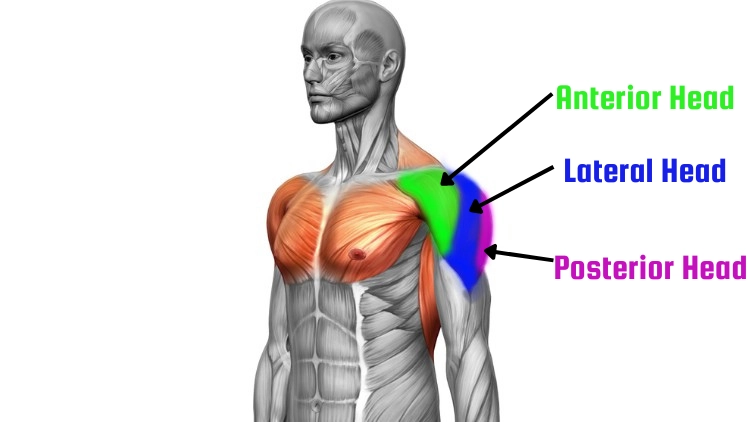
Source: Science Photo Library via Canva.com3
Scapular Stabilizers— The scapular stabilizers which include the rhomboids, serratus anterior and levator scapulae which help in thoracic extension (the ability to move the back into an arch) are demanded to maintain spine integrity.
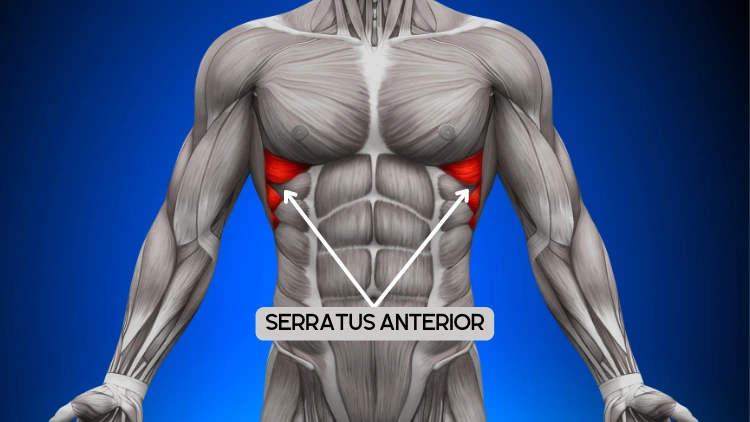
Source: decade3d via Canva.com4
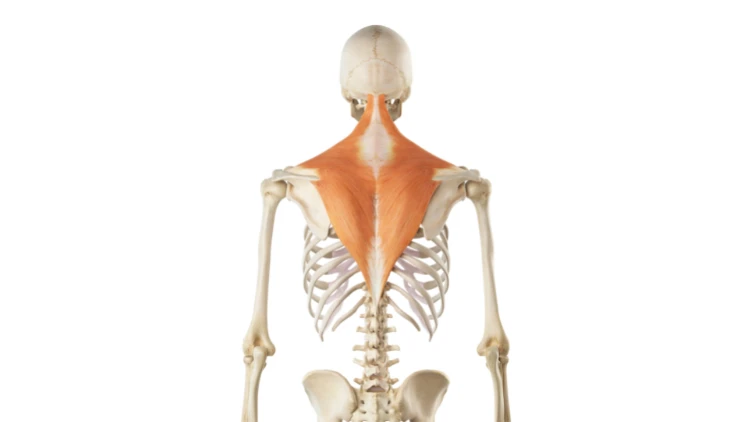
Source: Science Photo Library via Canva.com5
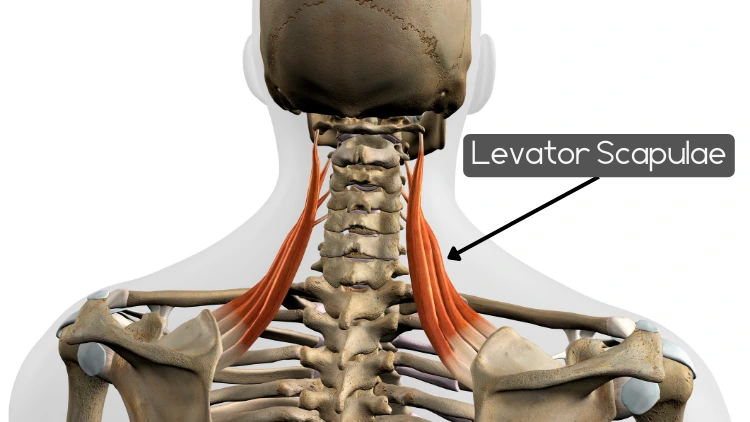
Source: Hank Grebe via Canva.com6
Rotator Cuff— The rotator cuff is composed of 4 muscles namely: supraspinatus, teres minor, infraspinatus and subscapularis and it is responsible for providing stability to the shoulder joint since its anatomy of having a small glenoid cavity and a large head that is spherical makes it very unstable.7
Rotator cuff muscles also control the fine actions during the pressing movement.
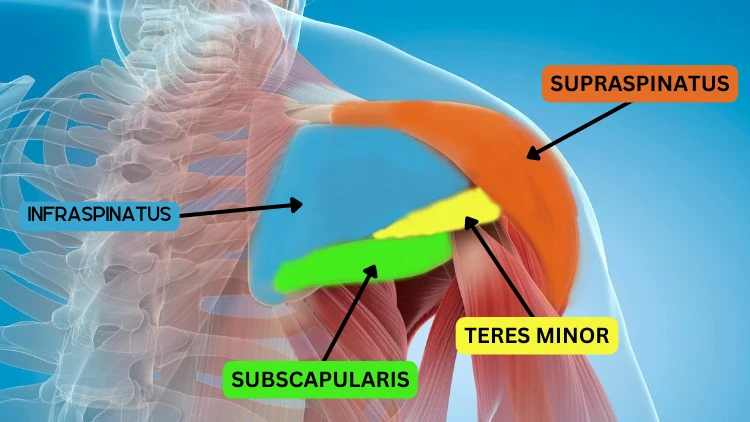
Source: Science Photo Library via Canva.com8
Lats—These are employed isometrically (static contraction) to maintain an upright posture.
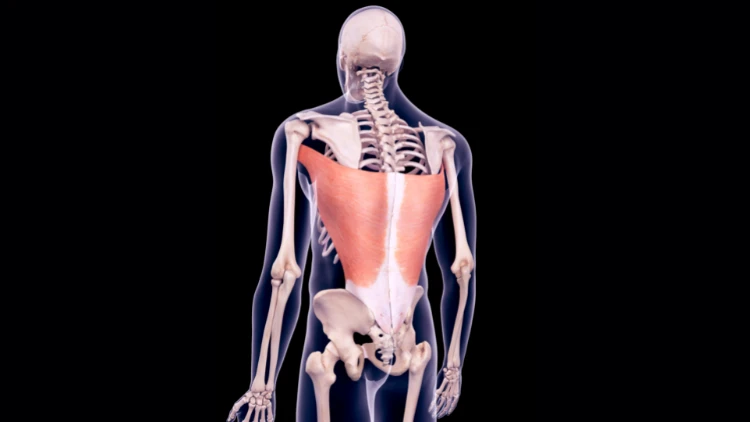
Source: Science Photo Library via Canva.com9
Triceps and Upper Pecs—The triceps and upper pecs assist the primary movers, the shoulders in this movement.
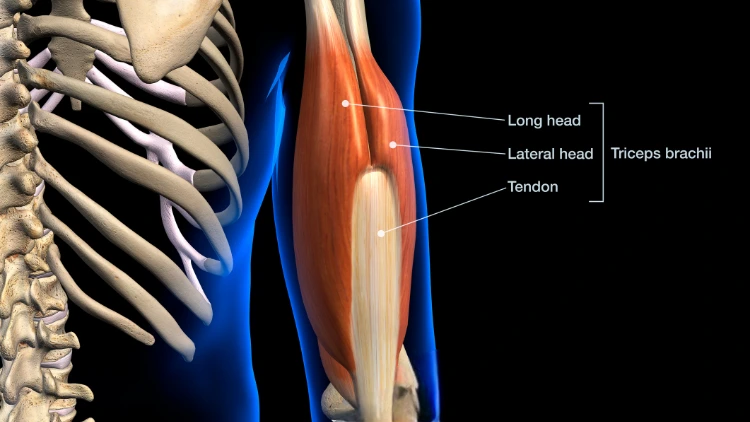
Source: Hank Grebe via Canva.com10
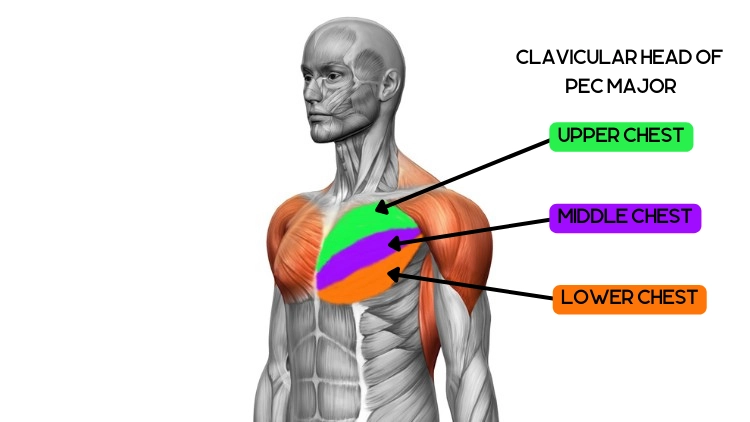
Source: Science Photo Library via Canva.com3
Abdominal Muscles—The abdominal muscles provide stability.
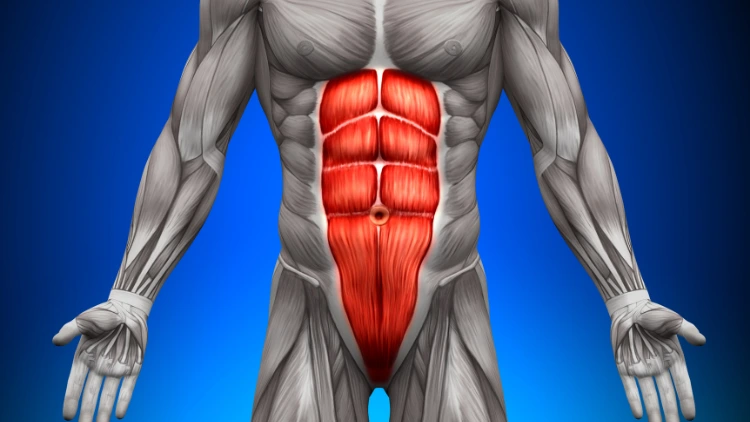
Source: decade3d via Canva.com11
2. Arnold Press
Named after the legendary bodybuilder Arnold Schwarzenegger, the Arnold press is an excellent exercise for sculpting shoulders and can be incorporated into a shoulder and bicep workout program to build massive arms.
It is a variation of the traditional shoulder press that targets all three heads of the deltoid muscle due to a rotation and twist of the palms; having them face inwards towards the lifter at the start of movement and end up facing away from the torso at the end of top of the movement.
As a result of this subtle change, the Arnold press is a hybrid of two movements, the shoulder press and the lateral raise. This increases the ROM and time under tension for the working muscles.
In comparing Arnold press to shoulder press, both exercises work the shoulder muscles, but they differ in variety and technique.
Time under tension refers to the time a muscle spends under a load while being contracted—when this variable is increased, there is an amplified muscle engagement of the target muscle that results in hypertrophy (muscle growth).12
How to Perform Arnold Press:
- Hold a pair of dumbbells and sit down on a bench with feet firmly planted on the floor. The dumbbells should be in front of the torso at face height while the palms are facing the body.
- Elbows should be slightly tucked, but not excessively.
- The lifter should brace the abs, lift the chest up and ensure that the shoulders are retracted.
- Initiate the movement while pressing the weight up while simultaneously rotating the palms such that they are now facing away from the body at the top of the movement.
- At the top of the movement and during the lockout, the palms are now facing away from the lifter as they would be with a conventional shoulder push exercises. It is recommended to have the elbows flare out slightly while pushing upwards to have the dumbbells wider at the top.
- Complete the rep by lowering the weight while simultaneously rotating the palms and have them end up at the end position facing the body once again.
- The weights should be lowered (eccentric) under control to maximize hypertrophy (muscle growth).
Benefits of the Arnold Press:
- This movement will give the lifter the broad shoulders they are looking for, just like Arnold himself, since it actively hits all 3 heads of the shoulder and is a hypertrophy oriented movement that is a branch of the bodybuilding sport.
- By going light on this exercise, lifters can improve their mind muscle connection (paying mind and/or feeling the muscle as it contracts under load) which is proven to increase engagement of the muscle thereby increasing hypertrophy rates.13
Additional Muscles Worked by the Arnold Press:
Front Deltoids—The front deltoids are the primary movers in this movement.
Lateral and Side Deltoids—Due to the rotational aspect of the movement, both the rear and side deltoids are actively engaged. Lateral delts are engaged because of the ‘lateral raise’ and the rear delts are activated not only due to the rotation, but the abduction of the shoulders (arms lifted to the sides) at the bottom part of the exercise.
Rotator Cuff—This muscle ensures the shoulder remains stable and also controls the intrinsic parts of the exercise.
Triceps—These are responsible for extending arms during the press and lockout.
Pecs—Pecs play a subdued role of helping to both abduct and rotate the arms.
3. Dumbbell Overhead Press (DB OHP)
Dumbbell overhead press is an excellent exercise that elicits superior muscle growth and strength while helping develop well rounded, and aesthetically pleasing shoulders. In addition to growing the shoulders, the upper chest and the triceps also get a workout.
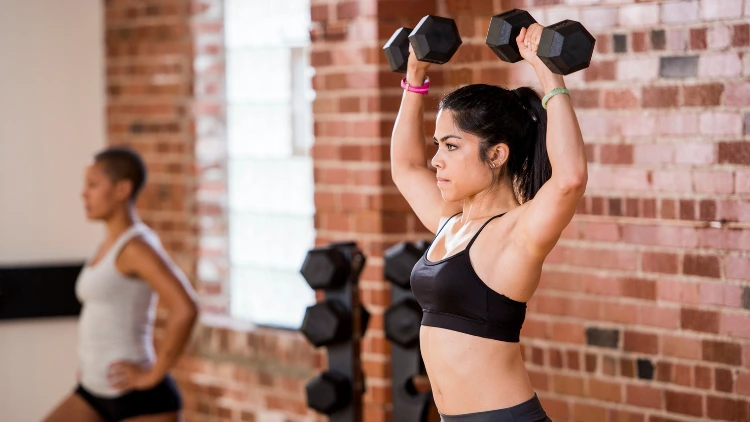
Source: FatCamera via Canva.com14
This exercise can be performed while sitting and/or standing and the lifter can use a variation of grips, angles and styles—this will lead to activation of different shoulder heads being activated such as the anterior (front) and posterior (rear). The dumbbell overhead press is a foundational exercise in both a 6-day workout routine plan and a 4-day workout split program, complementing other compound movements.
It truly can easily find its place on any best push day workout program plan due to its effectiveness.
How to Perform Dumbbell Overhead Press (DB OHP):
- Lift up a pair of dumbbells and position them such that the upper arms are almost parallel to the ground. Ensure the core and abs are activated and engaged, lift chest up and maintain the shoulders to be in a retracted and pulled back position.
- Press the weight up following an arc shape bringing the dumbbells together above the head and straighten the arms. Do not lock the elbows forcefully or push the weight in front – it should go directly overhead and almost as if it’s “slightly” behind.
- Slowly lower the dumbbells back to the starting position and repeat for desired reps.
Benefits of the Dumbbell Overhead Press (DB OHP):
- Due to its unilateral nature, this pressing movement addresses imbalances by enhancing joint and movement integrity training the lifter to not rely on one shoulder which may be a better mover and/or stronger.
- It also recruits new muscle fibers for overall hypertrophy.
Additional Muscles Worked by the Dumbbell Overhead Press (DB OHP):
Front Deltoids—The anterior deltoids are the primary movers in this exercise, providing the main driving force and being activated over 30% more compared to other vertical pressing movements like the bench press.The anterior delts are the primary mover in this exercise providing the main driving force and they are activated over 30% more compared to the other vertical pressing movements such as the bench press.15
Rear and Side Delts—While these muscles are active in the exercise, they primarily act as stabilizers for the front delts in the exercise.
Triceps—The triceps function to extend the elbows during pressing and assist in the lockout, making this compound movement beneficial for individuals with poor tricep genetics to overcome their genetic limitations.
Pecs—Pecs play a reduced role in the shoulder press by helping to rotate and abduct the arms.
Traps—The traps help with head, neck, arms, torso and shoulders mobility.
Barbell Vertical Push Exercises
Barbells are excellent tools to include in vertical pushing and present some advantages over their unilateral counterparts (dumbbells and kettlebells) and machines. The biggest advantage that they have is that they allow lifters to progressively lift heavy weights—the progressive overload principle which entails increasing volume, intensity and load to thwart off the adaptations muscles continually make as they are strength trained.16
This will sustain continuous muscle growth.
It is the choice for competitive sports such as powerlifting, bodybuilding and Olympic weightlifting and is the standard gauge to measure raw strength. Since the load is fixed, there is a smaller chance to deviate from the ROM which under heavy load could cause injury.
For vertical push workout, barbells can allow lifters to advance their strength due to the ability to load heavy.
4.Barbell Overhead Press (BB OHP) or Military Press
The barbell overhead press (BB OHP), also called the military press, is the most load intensive vertical pushing exercise that is at the disposal of the lifter’s arsenal.
It is a core compound movement that should be a staple for any fitness enthusiast that is serious about packing on muscle, building strong shoulders and triceps due to the heavier weight that can be hauled.
Overhead presses done with a barbell are more superior to their machine counterparts, eliciting more activation and thus hypertrophy.17 The military press is a component of the Jonnie Candito training routine, a renowned and proven program that provides the best shoulder workouts.
How to Perform Barbell Overhead Press (BB OHP) or Military Press:
- The barbell should be on a rack such that it is in front of the shoulders and the bar should be able to come off without the lifter tiptoeing and/or bending low.
- Feet should be shoulder width apart and hips and knees fully extended but they should not be locked out.
- Lifters should hold the barbell with elbows pointing forward and hands at shoulder-width apart.
- To initiate the movement, tighten the core, squeeze shoulder blades together and press the barbell up as the lifter is exhaling. When the barbell has passed the head, activate the shoulders and shrug marginally to push the head through the bar.
- Press until lockout has been achieved and while engaging the back muscles, slowly lower the barbell to the starting position. Repeat for desired reps.
Benefits of the Barbell Overhead Press (BB OHP) or Military Press:
- The barbell overhead press has several benefits including strengthening the upper body musculature contributing to overall upper body strength.18
- It also strengthens the core muscles and as a result, improves posture which can reduce back and neck pain.19
- They are a simple exercise which makes them excellent for beginner and novice builders alike, and the BB OHP is a functional movement that carries over to everyday activities such as lifting heavy objects onto upper shelves.
Additional Muscles Worked by the Barbell Overhead Press (BB OHP) or Military Press:
Front Deltoids—The front delts serve as the primary movers for the exercise.
Rear and Side Delts—While these muscles are active in the exercise, they only act as stabilizers for the front delts in the exercise.
Triceps—The triceps’ function is to extend the elbows during pressing and helping in the lockout.
Upper Pecs—Upper pecs provide a supporting role to the shoulders and triceps in pressing the weight, particular in the initial part of the exercise. If a lifter leans backwards, there is an increased activation of the upper pecs.
Scapular Stabilizers—The scapular stabilizers have the role of creating tension which provide the shoulders, upper pecs and triceps the necessary support to carry out their functions.
5. Push Press &/or Snatch
Push press is a variation of overhead press but involves the lower body to enhance the shoulders ability to press. The quads and glute are brought into the foray by helping to drive the bar overhead to increase size and strength.
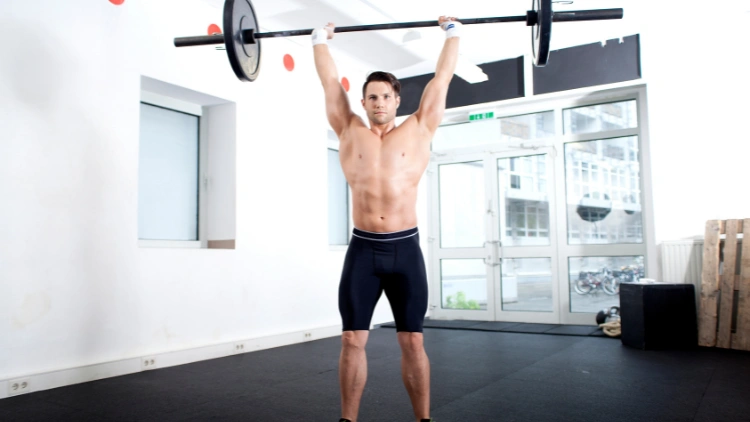
Source: MeikePetri via Canva.com20
Snatch is a compound exercise that is similar to the push press in terms of engaging both the upper and lower body, but instead uses one fluid motion to lift the bar from the ground all the way to the overhead position. Anybody who has seen the snatch performed is awed by and rightly so, being one of the stars for Olympic powerlifting competition.
Since both movements extensively engage the lower body, it is advisable to use specialized deadlift shoes like Adidas powerlifting shoes. For lifters going heavy with these movements, knee sleeves may be used to enhance knee stability.
How to Perform Push Press and/ or Snatch:
Push Press:
- The set up for the push is similar to the overhead press bringing the bar to the shoulders in front, with feet being hip-width apart and lifters should ensure their legs are straight.
- Proceed to dip the legs to a quarter squat position ensuring the chest remains tall as a preparation for using leg power.
- Once the dip is completed, explosively reverse the direction using the legs to drive force into the bar while the knees, ankle and hips fully extend as the weight flies off the shoulders.
- The head should be tilted to allow the bar to continue in its vertical path as the bar is pressed overhead while transitioning from a loose grip to a firm hold for the catch. A motion mimicking the re-rack may be needed to connect the reps.
Snatch:
Learning to do the snatch is best done under the supervision of a coach, but the movement is essentially broken down into 2 distinct phases.
- The barbell should be on the ground and the lifter should grip the bar with a wide snatch grip. Hips should be about the same height as the knees with knees and shoulders being slightly forward above the bar.
- Spine should be flat and rigid.
- Lifters should look forward, brace the core and inhale deeply. The lifter should keep in mind that the snatch is not a deadlift and from the start, they should break the barbell off the floor by pushing hard with the quads as they would with a leg press.
- There should be no thought about pushing the hips either back or forward rather knees should be extended to make way for the bar as it ascends. It should also glide up the thigh but not against it.
- As the lifter rises to the standing position, they should fully extend their lower body pushing hard into the ground with their legs.
- After extending the lower body, swiftly transition into catching the bar by descending into an overhead squat, maintaining a vertical squat bar path, and keeping the feet planted in a wider stance.
- Stay in the bottom overhead squat as long as is necessary to stabilize the barbell and once secured, ascend to the standing position.
Benefits of the Push Press and/ or Snatch:
Push Press:
- The push press enhances accelerating ability with practice to increase both power and weight beyond what the shoulders and arms muscles can solely produce—this spills over to other fitness areas.
- It also develops leg strength due to the tremendous amounts of force that comes from the legs which increases their overall power output and efficiency.
- Enhances powerlifting techniques as it can be used as an accessory for the jerk movement as it mimics the loading phase of the split and power jerk.
- The push press will naturally allow more load to be lifted overhead which increases shoulder strength and stability.
Snatch:
- The snatch allows for more force production—while strong athletes can lift heavy weights slowly, powerful athletes are able to move heavy quickly; the snatch facilitates this development. The snatch is thus a versatile exercise that is employed in training athletes for increasing strength, power and speed thus boosting athletic performance.21
- It improves the kinetic chain which is the grouping of muscles, joints and body segments to perform movements that result in a complex motor unit. The snatch is among the most complex body movements and as such, individuals become wired to move through more range of motions easily.
- Most if not all elements of the snatch can carry over to the power clean particularly once a lifter has mastered to develop vertical power through the body. They achieve this by mastering the technique of bringing the barbell into the hips, akin to the movement in a power clean rather than a deadlift, which involves a similar action.
Additional Muscles Worked by the Push Press and/ or Snatch:
Push Press:
Quadriceps—These muscles are responsible for the dipping and generating the forceful ascending speed.
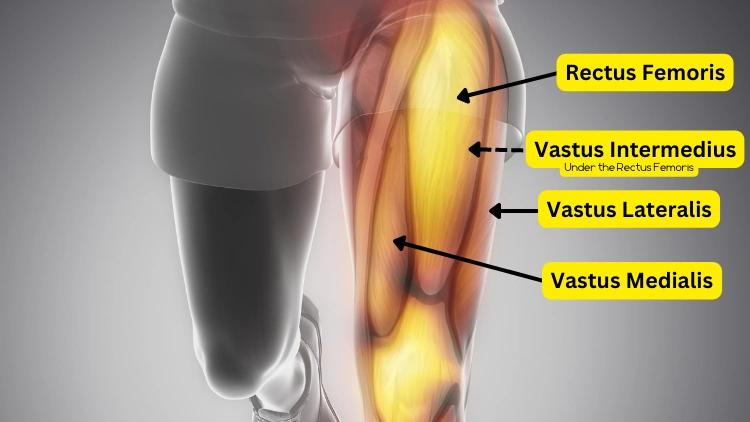
Source: janulla via Canva.com22
Glutes—Glutes are tasked at the end of the drive phase when the legs are dipping and subsequently reversing to contract and provide the extra vertical force on the bar. Lower glute exercises can significantly improve and enhance both the press and snatch movements.
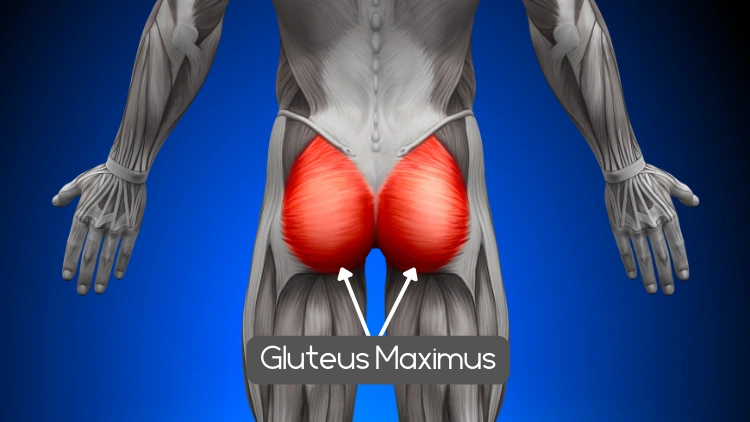
Source: decade3d via Canva.com23
Shoulders and Triceps—Both of these muscles play the primary role of completing the lift as the load is transferred to the arms and shoulders for the upward overhead movement of the barbell.
Core—Core muscles ensure an upright and rigid torso is maintained and that constant tension is maintained through the movement, providing a strong pillar for all other muscles to function.
Snatch:
Shoulders and Triceps—Shoulders are involved in pulling the bar up and triceps activated as the arms extend to lock out the barbell overhead.
Glutes, Hamstrings and Quads— The leg muscles and lower body are actively engaged to bear the load as the lifter moves under the bar and during the standing phase when knees and hips are extended.
Back Muscles—These muscles work in the pulling phase to stabilize the load overhead and help provide a foundation for the frame to allow the legs to generate force.
6. Behind the Neck Press
Behind the neck press is a variant of the overhead shoulder press that focuses on the shoulders but involves pressing the barbell from behind the neck as the name suggests. It is quite the controversial movement in the fitness world, since it places additional stress on the neck and shoulders, and while relatively safe to do, it is not an exercise for everyone.
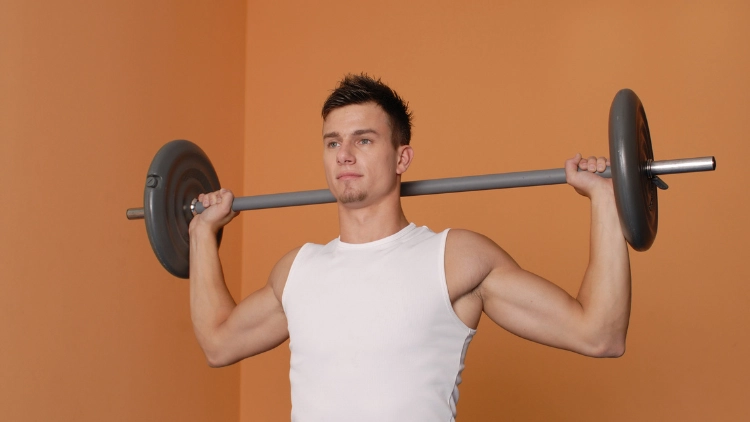
Source: technotr via Canva.com24
They can be done while sitting and/or standing. It should be noted that this exercise is recommended for lifters who have good spine and shoulder mobility and those with adequate trunk stability.
How to Perform Behind the Neck Press:
- Sit with the barbell placed across the traps and make sure the feet are planted firmly on the ground with knees bent at 90 degrees.
- The bar should be gripped with palms facing forward and with a shoulder wide grip. Shoulder blades should be squeezed together and core braced, while maintaining the elbows under the bar.
- Exhale and proceed to press the bar up while having it aligned with the head and lockout, then pause.
- Inhale before descending the bar to the starting position.
Benefits of the Behind the Neck Press: The exercise helps improve upper body strength and increases both shoulder mobility and stability. This reduces the risk for shoulder injury and pain.
Additional Muscles Worked by the Behind the Neck Press:
Shoulder Muscles—All three heads of the shoulder muscles are activated in this exercise.
Traps—These help maintain mobility in head, neck, torso, arms and shoulders.
Triceps—The triceps’ role is to extend the arms and help attain lockout at the top of the movement.
Serratus Anterior—This fan shaped muscle has the function of retracting the shoulder blades.
7. Landmine Press
The landmine press, a unique compound shoulder exercise using a barbell, is gaining popularity in the fitness world due to its distinctive range of motion and joint-friendly nature.
It also enhances unilateral strength since only one arm is worked in a single time and allows for scapular movement.
It develops stability of the joint and doesn’t need heavy weight to accomplish this.
How to Perform the Landmine Press:
- Insert one end of the barbell into either a corner of a wall and/or into a landmine base and place either a 25 or 45 lbs. plate on top of this sleeve and load the other end with the desired weight plates.
- Place the knee of the side that will be pressing the barbell on the floor and plant the other foot on the ground as well. The distance between the lifter’s knees and the sleeve of the barbell should be roughly 6-8 inches.
- Grab the sleeve of the barbell and position it at shoulder height. Activate and engage the core and ensure the back remains tight.
- With a slight lean forward, press the bar overhead in a slight diagonal angle and not vertically up and down, until elbow lockout.
- Lower the barbell down in a controlled manner and re-engage the core for the next rep.
Benefits of the Landmine Press Exercise:
- This exercise builds on core stability and strength, enhances scapular control and stability due to the pressing angle and also increases shoulder strength.
- Additionally, lifters can address asymmetries in movements and imbalances in the scapular region.
Additional Muscles Worked by the Landmine Press Exercise:
Shoulders—Shoulder muscles are the primary movers of this movement and these include all three heads.
Scapular Stabilizers—The shoulder blades retract the shoulders and ensure shoulder stability.
Triceps—Triceps are involved in the terminal part of the movement as with all pressing exercises during the elbow extension and assist the shoulders in the lock out.
Core—The core muscles get a good workout on this exercise, and in particular the obliques which are activated to prevent the torso from rotating towards the loaded side.
Vertical Push Exercises Using Kettlebells, Machines, Body Weight, & Bands
The use of kettlebells, machines, body weight and bands provide a unique dimension and variation to the body by challenging the body in non-conventional means which is always beneficial to prevent plateauing where muscle growth stagnates. Using different strategies and tools also prevents boredom.
Kettlebells can help build strength without the need to build muscle mass, provide functional workouts and burn calories well. Machines help isolate the muscles better by taking out the need for stabilization and cable machines ensure the muscle is constantly under tension throughout the movement.
Using bodyweight is a great entry point for beginners to get their feet into pressing movements and can also use bands both for body weight and lighter weights to increase tension and resistance. These are also less likely to cause less fatigue than when lifting heavier barbells which will provide a base to develop strength for the more advanced phase that uses heavier loads.
8. Kettlebell Z Press
This variation of the number one ranked exercise employs the use of kettlebells as opposed to dumbbells; it offers the same benefits as the dumbbells but is a more challenging tool to use to implement the exercise. The reason for this is that the bells rest on top of the forearms which results in a slight change in weight distribution.
However, lifters often adapt quickly—usually after only 1-2 weeks of using them.
How to Perform the Kettlebell Z Press: The set up for doing these is the same as the dumbbell Z press, but they are now performed using kettlebells.
Benefits of the Kettlebell Z Press: The benefits of the kettlebells Z press are the same as the dumbbell Z press helping enhance scapular stability, build core strength and overall upper body strength.
Additional Muscles Worked by the Kettlebell Z Press: Muscles worked by the kettlebell Z press are the same as the dumbbells Z press and these include
- Front deltoids
- Scapular stabilizers
- Rotator cuff
- Lats
- Triceps
- Upper pecs
- Abdominal muscles
9. Machine Shoulder Press
Machine shoulder press is a variant of the conventional shoulder press that helps strengthen the shoulder muscles by having a pressing pattern that focuses and isolates the shoulder muscles. It is an ideal exercise to be added at the end of a workout as a finisher for hypertrophy, particularly after the lifter is done with compound exercises.
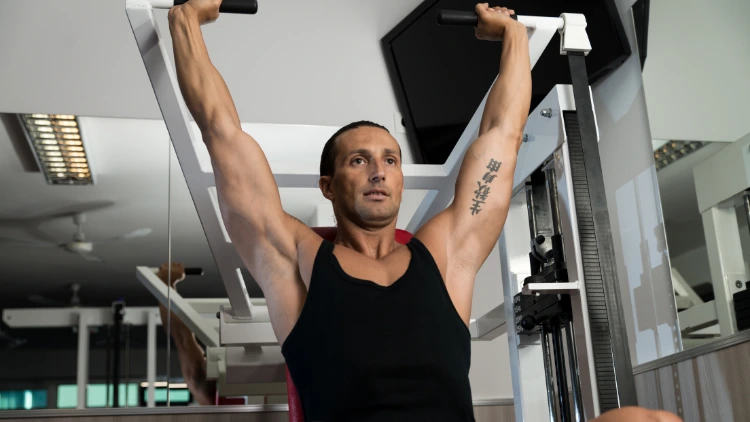
Source: Ibrakovic via Canva.com25
While machine shoulder presses are compound movements involving more than one muscle group, they isolate the shoulders effectively. This strategy is essential for preventing lifters from gaining strength without size, which can happen when they focus solely on compound movements and neglect isolation exercises in their routines.
How to Perform the Machine Shoulder Press:
- Sit in a machine and adjust the handles such that they are roughly at shoulder height.
- The handles can either be grabbed with a pronated (overhand) and/ or neutral grip.
- Inhale and proceed to press overhead.
- Once locked out, slowly lower the handles back to the starting position and complete desired reps.
Benefits of the Machine Shoulder Press:
- The machine shoulder press helps grow broader shoulders because of the way it isolates them.
- It is also beginner friendly because of the ease of doing it as the range of motion is fixed and requires little effort to execute.
- It ultimately helps build a bigger and stronger upper body, building the pecs and triceps for bigger arms.
Additional Muscles Worked by the Machine Shoulder Press:
- Shoulders—These are the primary movers of the movement and all three heads are involved in the exercise.
- Triceps—As one of the secondary muscles, these assist the shoulder in lock out and also extend the arms upwards.
- Traps— Traps help with head, neck, arms, torso and shoulders mobility.
- Pecs—The pecs assist with the rotation and abduction of the arms.
10. Cable Machine Press
The cable machine press is a variation of the overhead that uses a cable machine with pulleys to activate the shoulder muscles and provide constant tension to the target muscle. They can be done either standing or sitting down.
How to Perform Cable Machine Press:
- If done sitting, the lifter should place a bench in front of the cable machine and sit on it.
- To initiate the movement, grab the handles bringing them to shoulder height while ensuring the arms are bent at 90 degrees; this is the starting position.
- Extend through the elbows slowly and push the handles overhead until a stretch can be felt in the shoulders and hold for a slight pause.
- Descend in a controlled manner and repeat for desired reps.
Benefits of the Cable Machine Press:
- They are an easy exercise to perform and are ideal for beginners since there is no direct load on the body which means that the lifter can focus on the movement at hand. This lack of loading is also significantly less likely to cause fractures than using free weights.26
- Cables also increase the time under tension for a target muscle which has a positive impact on hypertrophy rates.
- Not only are cable machines great for beginners, but advanced lifters can also use them to build sculpted shoulders and they can use them as finishers after doing the heavy compound barbell movements. The weight stack on the machines has sufficient load even for the strong bodybuilders.
Additional Muscles Worked by the Cable Machine Press:
Shoulder Muscles—The front deltoids are the primary movers in this exercise, but the other delts also get activated providing a stabilization role.
Triceps— Triceps muscles are responsible for the lockout and also extending the arms assisting the primary movers.
In addition to the above exercises, the following can also be included into a regimen to switch things up and introduce some variation to prevent boredom and also plateauing that may occur due to the body used to the same monotonous movement.
- Smith machine overhead press
- Pike push up
- Banded overhead press
- Handstand push up
Standing vs. Sitting for Vertical Pushing Movements
It depends on what the training goals are for the individual. When done standing, vertical pushing movements serve more as a functional strength builder for those in sports such as powerlifting, weightlifting and CrossFit.
When vertical pushes are done sitting, they become hypertrophy intensive as they isolate the shoulders better and may be an option for lifters who have not yet built enough core strength such as newbies.
It should be noted however that as per studies, standing exercises that have a stability requirement demonstrated the highest neuromuscular action of the delts, when done with lowest 1 rep max strength.27 The one rep max (1RM) is the maximum amount that someone can lift in an exercise in one rep.
Therefore, to get the best of both worlds, lifters should incorporate both variations for presses that will lead to strengthening both the upper and lower body and this increase overall body strength. They should do this only if there are inhibitions such as joint pain, can maintain a neutral spine and can feel the muscle engage.
How To Get the Most Out of Your Vertical Pushing
While doing vertical pushes can help build superior strength and muscle in the upper body, the lifter should pay attention to certain cues and techniques to get the most of these exercises to increase efficiency and introduce variation—these include paying attention to ROM, elbow placement and lifting weight that is doable and keeping ego at bay.
Lifting Safely—Preventing injury is key to continuing a strength training program and reap its benefits, and it is important to lift weights with correct form and weights that are not too heavy to handle. Heavy weights almost always compromise form which can lead to injury.
Using dumbbells over barbells can be favorable in some cases for those that have mobility issues since there is no restriction on the ROM allowing for a safer lift. Ensure to lift in a well-lit area with enough space and if there is constant pain, then stop doing the exercise and consult a physician to see if it’s safe to carry on.
Elbow Placement—Elbow placement is very important in ensuring that the focus muscles are being activated properly and to prevent injury. When elbows are flared in some exercise, leverage is often sacrificed and form compromised leading to a less activation or even stress on the shoulders that can lead to pain and/ or injury.
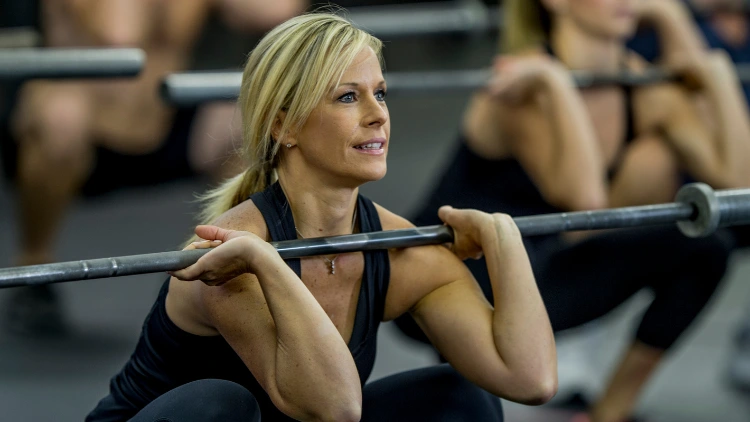
Source: FatCamera via Canva.com28
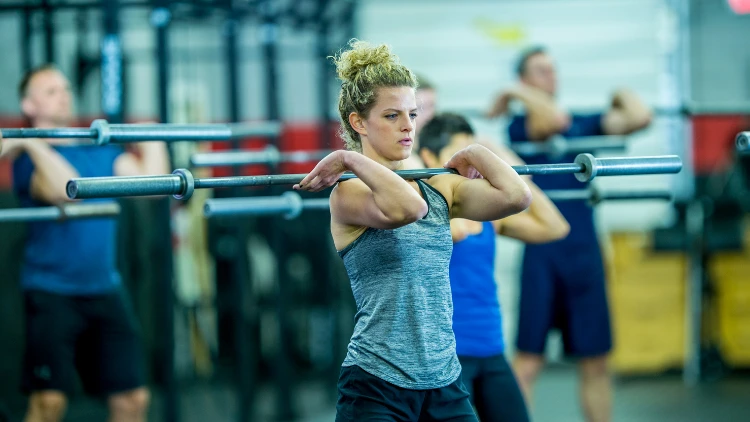
Source: FatCamera via Canva.com29
Grip Width—Always pay attention to grip width because it has a direct effect on whether a lifter is able to lift properly and prevent potential injury. An overhead press for example, if done with a wide grip will lead to a weaker press by reducing the role of the triceps and also making for a harder lockout.
Grip width also has an impact on whether the elbows will flare—wider grip will cause more elbow flaring, placing an undue stress on the shoulder joint.
Too narrow a grip, and the shoulders are put in an internal rotation position which causes shoulder impingement (when the rotator cuff scrubs on the outer edge of the scapular).
Supinated vs. Pronated Grip— The placement of the hand and technique of grip an important consideration when performing resistance training. A supinated grip, or underhand grip is when the palms are facing towards you, giving more emphasis to the biceps and forearms as in chin-ups, rows and deadlifts.
Conversely, a pronated grip, which is an overhand grip with the palms facing away from the torso, is used in most vertical push exercises for shoulders. For the most part, the pronated grip is what is used for overhead press.
It should be noted that a pronated (overhand) grip is generally weaker than the supinated (underhand) grip.30 Choosing a hook grip over a mixed grip for exercises like the snatch is better because the hook grip offers a superior hold, which is essential due to the explosive nature of the pull.
Mind Muscle Connection— Mind muscle connection is an important component in strength training that is often overlooked by many. Paying attention to the muscle as you engage it not only increases muscle activation of the target muscle but also ensures that other muscles that are not supposed to be assisting in the movement are prevented from doing so.
This makes for an efficient exercise that does what it is designed to do, that is grow and strengthen the target muscle.
Lifters should commit to their vertical push workout and overall training program, avoiding the 8 deadly training sins such as expecting overnight results or entering the gym without clear, concrete goals. The most important thing about good information is acting on it to achieve results that bring the dream physique to life.
Achieving upper body strength and defined shoulders can be accomplished with these 10 vertical push exercises, with the top exercise being the dumbbell Z press, which ranks #1 according to research and sports science for its benefits of working all three heads of the shoulders, enhancing posture, and improving scapular control and tension.
Frequently Asked Questions
How Many Sets of Vertical Pushing Movements Should I Do per Week?
The front deltoids are the primary movers in most pressing movements and already receive a sufficient amount of volume as a result. Therefore, a lifter should lift between 6-8 sets of exercises that are dedicated to the front deltoids including overhead press exercises and isolation exercises. This should also be enough volume to harden muscles of the shoulders.
Any more than this, and there is an impediment to recovery and subsequent growth.
How Many Reps of Pressing Exercises Should I Do per Set?
To attain excellent hypertrophy rates and gain strength it is recommended to do 10-12 reps per set and realize the benefits of pressing exercises.
Should My Elbows Face Forward or Flare When Pressing Overhead?
It depends whether the lifter is training with a barbell or dumbbells. For barbells, the elbows should not be flared, but should rather stay angled into the torso to ensure that the shoulders, triceps and upper pecs stay loaded in the movement.
Flaring them would take away from the triceps and pecs. For dumbbells, however, the elbows should be in front of the body and pointing out to the sides to activate the front delts more.
Is Bench Press a Vertical Press or Push?
Bench presses are not considered vertical presses per se, but rather horizontal pushing exercises because the weight is pressed in a horizontal plane in relation to the body.
Are Lateral Raises a Vertical Press or Pull Exercise?
Lateral raises are neither a vertical press nor a pull exercise. Rather, they are considered a push exercise.
References
1“12 Upper Body Vertical Pressing Exercises.” YouTube, 27 April 2018. Accessed 18 April 2023. <https://www.youtube.com/watch?v=q_Cp49WrRps>
2Brad J Schoenfeld, J. G. (2020, January 21). Effects of range of motion on muscle development during resistance training interventions: A systematic review. Retrieved 2023, from <https://www.ncbi.nlm.nih.gov/pmc/articles/PMC6977096/>
3Science Photo Library. “The muscles involved in standing biceps curl. The stabilizing muscles are highlighted.” Canva. Accessed 12 April 2023. <https://www.canva.com/photos/MADmTGwAFbo-the-muscles-involved-in-standing-biceps-curl-the-stabilizing-muscles-are-highlighted-/>
4decade3d. “Serratus Anterior – Anatomy Muscles.” Canva, 20 April 2019. Accessed 13 April 2023. <https://www.canva.com/photos/MAC_UoPgDPM-serratus-anterior-anatomy-muscles/>
5Science Photo Library. “”Human trapezius muscles.” Canva. Accessed 13 April 2023. <https://www.canva.com/photos/MADmTLHptgU--human-trapezius-muscles/>
6Hank Grebe. “Male Levator Scapulae Back Muscles in Isolation on Skeleton.” Canva, 20 April 2019. Accessed 13 April 2023. <https://www.canva.com/photos/MAD9YMqg3_M-male-levator-scapulae-back-muscles-in-isolation-on-skeleton/>
7Maruvada, S., Madrazo-Ibarra, A., & Varacallo., M. (2022, March 31). Anatomy, Rotator Cuff. Retrieved 2023, from <https://www.ncbi.nlm.nih.gov/books/NBK441844/>
8Science Photo Library. “”Shoulder muscles.” Canva. Accessed 12 April 2023. <https://www.canva.com/photos/MADmTDg8VA4--shoulder-muscles/>
9Science Photo Library. “F017/1255.” Canva, 20 April 2019. Accessed 13 April 2023. <https://www.canva.com/photos/MADq3vbyn-k-f017-1255/>
10Hank Grebe. “Labeled Anatomy Chart of Shoulder, Elbow and Triceps Muscles in Skeleton on Black Background.” Canva. Accessed 12 April 2023. <https://www.canva.com/photos/MAEJnzTxmJU-labeled-anatomy-chart-of-shoulder-elbow-and-triceps-muscles-in-skeleton-on-black-background/>
11decade3d. “Abs – Anatomy Muscles.” Canva. Accessed 12 April 2023. <https://www.canva.com/photos/MADerFwn3js-abs-anatomy-muscles/>
12Nicholas A Burd, R. J. (2011, November 21). Muscle time under tension during resistance exercise stimulates differential muscle protein sub-fractional synthetic responses in men. Retrieved 2023, from <https://www.ncbi.nlm.nih.gov/pmc/articles/PMC3285070/>
13Joaquin Calatayud, J. V. (2016, March). Importance of mind-muscle connection during progressive resistance training. Retrieved 2023, from <https://pubmed.ncbi.nlm.nih.gov/26700744/>
14FatCamera. “Dumbbell.” Canva, 20 April 2019. Accessed 13 April 2023. <https://www.canva.com/photos/MAED4YgsDM4-dumbbell/>
15Yuri A. C. Campos, J. M.-M. (2020, October 31). Different Shoulder Exercises Affect the Activation of Deltoid Portions in Resistance-Trained Individuals. Retrieved 2023, from <https://www.ncbi.nlm.nih.gov/pmc/articles/PMC7706677/>
16Mark D. Peterson, E. P. (2010, November 27). Progression of volume load and muscular adaptation during resistance exercise. Retrieved 2023, from <https://www.ncbi.nlm.nih.gov/pmc/articles/PMC4215195/>
17Giuseppe Coratella, G. T. (2022, July 22). Front vs Back and Barbell vs Machine Overhead Press: An Electromyographic Analysis and Implications For Resistance Training. Retrieved 2023, from <https://pubmed.ncbi.nlm.nih.gov/35936912/>
18Jordan Kroell, J. M. (2017, December). Exploring the Standing Barbell Overhead Press. Retrieved 2023, from <https://aquila.usm.edu/fac_pubs/17605/>
19Oliver Ludwig, J. K. (2018, November 27). Targeted Athletic Training Improves the Neuromuscular Performance in Terms of Body Posture From Adolescence to Adulthood – Long-Term Study Over 6 Years. Retrieved 2023, from <https://www.ncbi.nlm.nih.gov/pmc/articles/PMC6277893/>
20MeikePetri. “Overhead squat, push press with barbell.” Canva, 20 April 2019. Accessed 13 April 2023. <https://www.canva.com/photos/MAC__X2SYr4-overhead-squat-push-press-with-barbell/>
21JL Ayers, M. D. (2016, May 10). Hang cleans and hang snatches produce similar improvements in female collegiate athletes. Retrieved 2023, from <https://www.ncbi.nlm.nih.gov/pmc/articles/PMC4993140/>
22janulla. Canva. Accessed 18 April 2023. <https://www.canva.com/photos/MADAhbO1cbM-thigh-man-muscle-anatomy/>
23decade3d. “Gluteus Maximus – Anatomy Muscles.” Canva. Accessed 12 April 2023. <https://www.canva.com/photos/MADerAJvWMU-gluteus-maximus-anatomy-muscles/>
24technotr. Canva. Accessed 18 April 2023. <https://www.canva.com/photos/MAEE5UJh_FY-overhead-presses/>
25Ibrakovic. “Shoulder Press Workout.” Canva, 20 April 2019. Accessed 13 April 2023. <https://www.canva.com/photos/MAC_xtHcBZQ-shoulder-press-workout/>
26Zachary Y Kerr, C. L. (2010, April). Epidemiology of weight training-related injuries presenting to United States emergency departments, 1990 to 2007. Retrieved 2023, from <https://pubmed.ncbi.nlm.nih.gov/20139328>
27Atle H Saeterbakken, M. S. (2013, July). Effects of body position and loading modality on muscle activity and strength in shoulder presses. Retrieved 2023, from <https://pubmed.ncbi.nlm.nih.gov/23096062/>
28FatCamera. “Squatting And Lifting.” Canva, 13 December 2011. Accessed 13 April 2023. <https://www.canva.com/photos/MAEJMwLymQE-lifting-barbells/>
29FatCamera. “Lifting Barbells.” Canva, 13 December 2011. Accessed 13 April 2023. <https://www.canva.com/photos/MAEJgH6hoFw-lifting-barbells/>
30Stacy Fan, J. C. (2019, August 11). Variation of Grip Strength and Wrist Range of Motion with Forearm Rotation in Healthy Young Volunteers Aged 23 to 30. Retrieved 2023, from <https://pubmed.ncbi.nlm.nih.gov/31413492/>